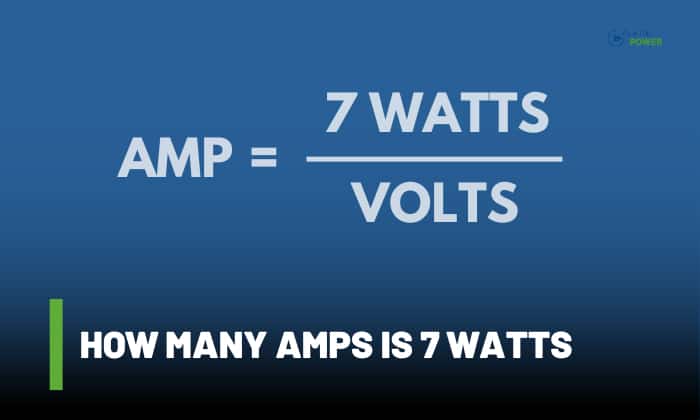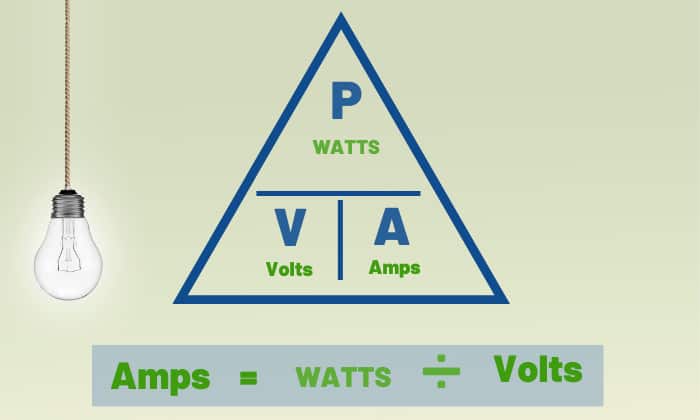In such cases, you may want to know how many amps is 7 watts. To find an answer, several factors need to be considered. These factors include the particular electrical phase, the system voltage, and the power efficiency rating of the device.
Understanding these factors will help you accurately determine the required amount of current for a specific device. To get an idea of how the conversion works, let’s do the calculations below.
Table of Contents
Calculating Amperage from Wattage
It is essential to understand that the wattage conversion for various devices can vary depending on the electrical phases involved, such as DC, AC Single-Phase, and Three-Phase systems. This is because each phase may have different requirements and formulas for converting power ratings.
To have a better understanding of the formulas as well as each requirement, let us convert 7 watts in different electrical systems.
1. Direct Current (DC)
When dealing with a Direct Current (DC) electrical connection, converting from device power to current rating is typically straightforward. It involves a simple formula: Amps = Watts / Volts. In this case, all you need to consider is the system voltage.
For instance, let’s consider a 7-watt device that requires a connection to a 12-volt DC system. The calculation would be as follows:
\[ \frac{{7 \text{ watts}}}{{12\text{v}}} = 0.58 \text{ amps} \]
This indicates that a 7-watt device operating within a 12-volt circuit only requires approximately 0.58 amps to function properly.
2. Single-Phase Alternating Current (AC)
In most residential houses, Single-Phase Alternating Current (AC) is commonly employed with voltage ratings at 110v and at 220V. It is used to power general household appliances as well as some high-power electrical equipment.
When converting watts to amps in this electrical phase, an important factor to consider is the device’s power efficiency, which is referred to as the power factor. Then you can use the equation Amps = Watts / (Volts x Power Factor) to convert watts to amps.
For instance, let’s consider a 7-watt device operating at a system voltage of 220v with an efficiency rating of 0.5%. The calculation would be as follows:
\[ \frac{{7 \text{ watts}}}{{220 \text{ volts} \times 0.5}} = 0.063 \text{ amps} \]
This implies that in a 220v circuit, 7 watts would necessitate a current rating of 0.063 amps.
3. AC Three-Phase Line-to-Line Voltage
We also need to consider the power factor for a line-to-line three-phase connection. However, the required equation is a bit different.
For example, a 7 watts device with a 0.5 power factor for a 208v three-phase circuit. Using this equation Watts / (√3 x PF x V) = amps, here’s how it works:
\[ \frac{{7 \text{ watts}}}{{\sqrt{3} \times 0.5 \times 208 \text{ volts}}} = 0.038 \text{ amps} \]
This indicates that a 7-watt device requires a current of 0.038 amps in a three-phase line-to-line circuit.
4. AC Three-Phase Line-to-Neutral Voltage
For line-to-neutral connections, it also needs to consider the device power factor. Then the equation to be used is Watts / (3 x PF x V) = amps. Suppose you have a 7 watts device, a power factor of 0.5, and a line-to-neutral voltage of 277 volts. The calculation would be:
\[ \frac{{7 \text{ watts}}}{{\sqrt{3} \times 0.5 \times 277 \text{ volts}}} = 0.016 \text{ amps} \]
Therefore, 0.016 amps are used by a 7 watts device at 277v three-phase line-to-neutral connections.
Knowing about various electricals requires having a solid understanding of how calculations work. However, you may also use an online watt to amp calculator in addition to this manual conversion. It makes the conversion easier and more efficient.
Conclusion
In conclusion, calculating how many amps is 7 watts device becomes effortless once you familiarize yourself with the relevant formulas and electrical factors. Additionally, utilizing online tools for conversion offers a convenient and user-friendly approach.
Remember, the conversion from device power to the current rating is crucial for ensuring the safety and reliability of your circuit. By understanding the required current in a specific circuit, you can prevent issues like circuit overload and create an optimal operating environment for your device.

I am Edwin Jones, in charge of designing content for Galvinpower. I aspire to use my experiences in marketing to create reliable and necessary information to help our readers. It has been fun to work with Andrew and apply his incredible knowledge to our content.


